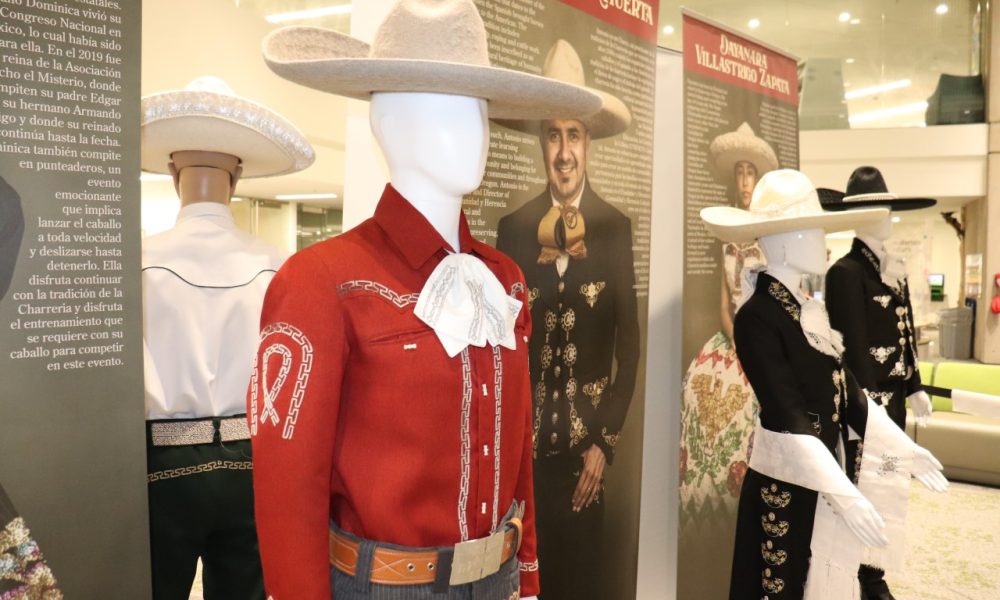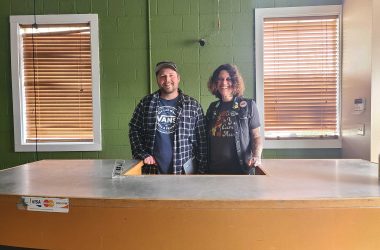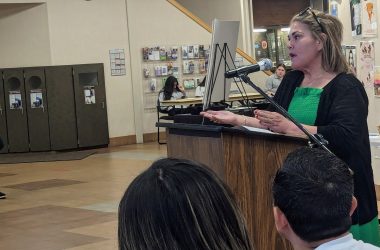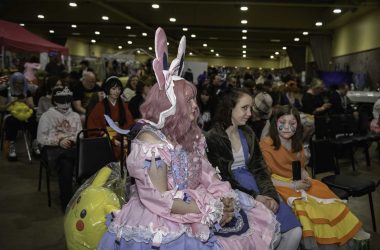For Antonio Huerta, wearing a charro outfit is more than just representing an old and rich tradition of horsemen in Mexico.
The director of Comunidad y Herencia Cultural, a nonprofit that provides Hispanic educational and artistic outreach, feels “there’s a responsibility on my shoulders” whenever he puts on the boots and spurs, hand-sewn shirts and pants and belt buckle that make the outfit of a charro — the male form of the word for a Mexican horse rider or cowboy.
“It’s a responsibility that brings you joy and a lot of pride,” said Huerta, who’s worn the charro outfit to ceremonies.
The way he sees it, anyone who dons the outfit is “in the spotlight.”
“People are going to judge you based on your behavior and what you do,” Huerta said. “I don’t know if there’s a way to articulate it. It’s one of those things. You feel it.”
Those charro outfits — some of which he has worn — are currently on display behind the front desk of the Salem Library, 585 Liberty St. S.E., until March 3.
The exhibit is a partnership between Comunidad y Herencia Cultural and the library. It came together after Huerta was introduced to Deputy Librarian Bridget Esqueda through another Hispanic-led organization, the Instituto de Cultura Oregoniana.
“The beginning of the year is usually a slow time for exhibitions. I thought it was time to rotate the exhibits throughout the state year-round,” Huerta said. “I reached out to Bridget, she was enthusiastic about it and we made it happen.”
From Esqueda’s perspective, she wanted to “jump on the opportunity” to set up the exhibit, which consists of four male and two female mannequins wearing charro/a outfits. Those mannequins stand against the backdrop of long posters, sharing the stories of Oregonians — including Huerta — and their connection to charro attire.
“A lot of our patrons who come to the library are of half-Hispanic or Latino background, so they would be able to see a little bit of themselves in the library,” Esqueda said.
She noted “how much care and time” went into making the clothes, from the embroidery on the clothes to the belt buckles.
“Each one is made with so much … precision, you really can’t replicate these anywhere else,” she said. “I haven’t seen anything quite like it before.”
But as much as Huerta wants library patrons to appreciate the artisans’ talent, he stressed that Comunidad y Herencia Cultural’s exhibit is not meant to “show off” anything. Rather, it is meant to educate and serve as a welcoming space for Hispanic people.
“One of the focuses of our work is really about creating opportunities for Latino youth to see themselves represented in a positive light,” and wash away the perception some might have that Hispanics are “bad people,” Huerta said.
He added that with this exhibit, it is important for Hispanics to “see themselves” represented in public spaces, such as a library.
Part of that may be because the charro outfit represents a point of pride for the Mexican people. The clothes originate from Spaniards who traveled to the Americas and colonized Mexico more than 500 years ago.
“They brought horses and cattle and their own attire that looks similar to charro attire,” Huerta said. “But then, the Mexican indigenous people adapted it to the Mexican landscape — that’s how it came to be what it is today.”
In the 1500s, indigenous Mexicans were not allowed to even ride horses, according to Huerta. But the animals began to reproduce quickly and Spanish landowners suddenly needed help to domesticate the horses.
“Indigenous people started to develop … working with the horses, doing cattle work, using a rope, they started to form an association,” Huerta said. “They started to become really talented in all of this.”
In the 1600s or so, the Spanish Kingdom caught on to what the indigenous people were doing and started sponsoring expeditions to bring charro presentations to Spain and other parts of Europe.
“The Mexican indigenous people adapted the outfits and made changes to fit their own needs,” which included narrowing the pant legs and decorating leather, Huerta said.
In the late 1800s, charro outfits started to be worn by mariachi bands at the insistence of the then-Mexican president.
In 1933, a presidential proclamation declared charrería the national sport of Mexico.
“The country was in bad shape and the charro became the iconic figure to bring the country back together, build its morale and reconcile all the differences between the Spanish and the indigenous people,” Huerta said.
While the charro as a figure became nationally recognized in Mexico, their outfits became popular in many western U.S. films of the 1930s, 1940s and 1950s.
Today, charro outfits are still worn among riders and members of mariachi bands.
“I actually equated it to musicians, but that’s not how it is at all,” Esqueda said. “The charro attire … comes more with horsemanship and ranching. I’ve learned that in this exhibit.”
Huerta wants people to observe the talent of the people who made the outfits, from the sombrero on down to the belts and boots. Even ropes the charro/as used are part of the exhibit.
“For non-Hispanics, it will be to appreciate the artistry that comes with the attire — how do they get inspired to make the designs,” Huerta said. “Hopefully walk away feeling interested in learning more about the tradition.”
Esqueda spoke along those same lines when asked what she wants non-Hispanics to take away from the exhibit.
“At the library we always want to embrace and reflect our community in the library, so by bringing this charra attire exhibit, we’re hoping that people who are not of that culture learn a little bit about that culture,” Esqueda said.
The exhibit is accessible during the library’s hours, 10 a.m. to 7 p.m. Tuesday through Thursday, and 10 a.m. to 5 p.m. Friday and Saturday. The library is also open 1 p.m. to 5 p.m. on Sunday.

News tip? Contact reporter Kevin Opsahl by email: [email protected].
SUBSCRIBE TO GET SALEM NEWS – We report on your community with care and depth, fairness and accuracy. Get local news that matters to you. Subscribe today to get our daily newsletters and more. Click I want to subscribe!

Kevin Opsahl is the education reporter for Salem Reporter. He was previously the education reporter for The Mail Tribune, based in Medford. He has reported for newspapers in Utah and Washington and freelanced. Kevin is a 2010 graduate of Central Washington University in Ellensburg, Washington, and is a native of Maryland.









